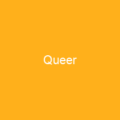LGBTQ: An Umbrella Term for Diversity
Have you ever wondered what the term LGBTQ stands for, or why it’s so important in today’s society? LGBTQ, which is also seen as LGBT, LGBT+, LGBTQ+, LGBTQIA, and LGBTQIA+, is an initialism that encompasses a wide range of sexualities, romantic orientations, sex characteristics, and gender identities. It serves as an umbrella term to broadly refer to all those who are not heterosexual or cisgender.
The Evolution of Terms
Back in the 1990s, LGB (lesbian, gay, bisexual) was adopted by activists, later expanding to include transgender people as they gained recognition. Around this time, some began reclaiming the term ‘queer,’ seeing it as a more radical and inclusive umbrella term. However, others rejected it due to its history as a pejorative.
The Plus Sign: Inclusion for All
To represent additional identities not captured within the initialism, LGBTQ+ was adopted with the plus sign. Various variants exist, such as LGBTQIA+, 2SLGBTQ+, LGBTQQ, and GLBT. These labels are not universally agreed upon by everyone they aim to include.
The LGBTQ Community
The term LGBTQ has seen much controversy regarding universal acceptance of different member groups but remains a positive symbol of inclusion for many. The first widely used term was homosexual, now primarily used in scientific contexts, followed by the popularization of gay in the 1970s and lesbian. A dispute led to some lesbian organizations dissolving as equality was prioritized over gay rights. Lesbian feminists eschewed gender role play and patriarchal views, while others considered it detrimental to the cause.
The Struggle for Inclusion
In the late 1970s and early 1980s, some gays and lesbians became less accepting of bisexual or transgender people. Critics said that transgender people were acting out stereotypes, and bisexuals were simply gay men or lesbian women afraid to come out. These conflicts continue to this day.
The Inclusion of Allies
Activists began using LGBT in the United States from about 1988, and the term has been a positive symbol of inclusion since its adoption. The field of study is called queer studies, recognizing the reclamation of the term. The initialism LGBT has evolved to LGBTQ in recognition of the community’s reclamation of the term.
Variants and Criticisms
Various variants include LGBT+, LGBTQIA, and LGBTQIA+. These terms include additional letters or variations for intersex, asexual, aromantic, agender, and other identities. The initialism has been criticized for being confusing, unwieldy, and implying that it refers to a single community.
The Feminist Connotation
LGBTQ may have a more feminist connotation due to the placement of the ‘L’ (for lesbian) first. Variant terms do not typically represent political differences within the community but arise from individual and group preferences. Some variants include straight allies, polyamorous individuals, HIV-affected people, and others.
The Controversy Surrounding Allies
Adding allies to the initialism has sparked controversy, with some seeing it as a form of LGBT erasure. The community is sometimes identified as LGBTQ2 in Canada, depending on which organization is using the abbreviation. Likewise, the term transsexual commonly falls under the umbrella term transgender but some transsexual people object to this.
The Inclusion of Intersex People
Those who add intersex people to LGBT groups or organizations may use the extended initialism LGBTI, or LGBTIQ. The relationship of intersex to lesbian, gay, bisexual and trans, and queer communities is complex, with some preferring inclusion and others advocating for exclusion. Numerous studies have shown higher rates of same-sex attraction in intersex people, with research used to explore means of preventing homosexuality.
The Recognition of Asexual and Aromantic Identities
In the early 2010s, asexuality and aromanticism started gaining wider recognition, leading to their inclusion in the expanded initialism LGBTQIA. Asexual individuals experience minimal to no sexual attraction to others, while aromantic individuals lack romantic attraction to others. Agender individuals have no gender identity or possess a neutral or genderless gender identity.
Political and Social Solidarity
The initialisms LGBT or GLBT are not agreed upon by everyone, with some arguing that transgender and transsexual causes are distinct from LGB issues. In the context of political action and community organization, distinctions are made.
The Debate on Separatism
Belief in ‘lesbian and gay separatism’ holds that lesbians and gay men should form a separate community from other groups included in the LGBTQ sphere. In contrast, Peter Tatchell argues that separating the transgender movement from the LGB would be ‘political madness.’ Some lesbian, gay, bisexual, and transgender people do not subscribe to or approve of the political and social solidarity and visibility associated with the LGBT community, believing that grouping together people with non-heterosexual orientations perpetuates the myth that being gay/lesbian/bi/asexual/pansexual/etc. makes a person deficiently different from others.
Alternative Terms
A 1996 book and 2014 BBC News Magazine article question whether various gender groupings share common issues and goals. Some LGBT organizations have been accused of being transphobic, with the ‘Drop the T’ campaign being condemned by many groups. Alternative terms such as ‘queer,’ ‘SGM/GSM/GSRM,’ and others have gained popularity but remain controversial due to their historical usage or perceived meanings.
The Inclusivity of SGM
A UK government paper favors SGM (Same Gender Loving) because initials like LGBTIQ+ stand for terms that are ‘not necessarily inclusive of local understandings and terms used to describe sexual and gender minorities.’ In Canada, the term 2SLGBTQ+ is seen, encompassing two-spirit, lesbian, gay, bisexual, trans, queer, and questioning identities. Other umbrella terms include Minority Sexual and Gender Identities (MSGI), Gender and Sexual Diversities (GSD), MOGII, and MOGAI.
The Conclusion
As we navigate the complex landscape of LGBTQ+ identities, it’s clear that there is no one-size-fits-all approach. Each term and variant represents a unique perspective on inclusion and representation. The journey towards understanding and acceptance continues, with each step bringing us closer to a more inclusive society.

You want to know more about LGBTQ?
This page is based on the article LGBTQ published in Wikipedia (retrieved on March 1, 2025) and was automatically summarized using artificial intelligence.







